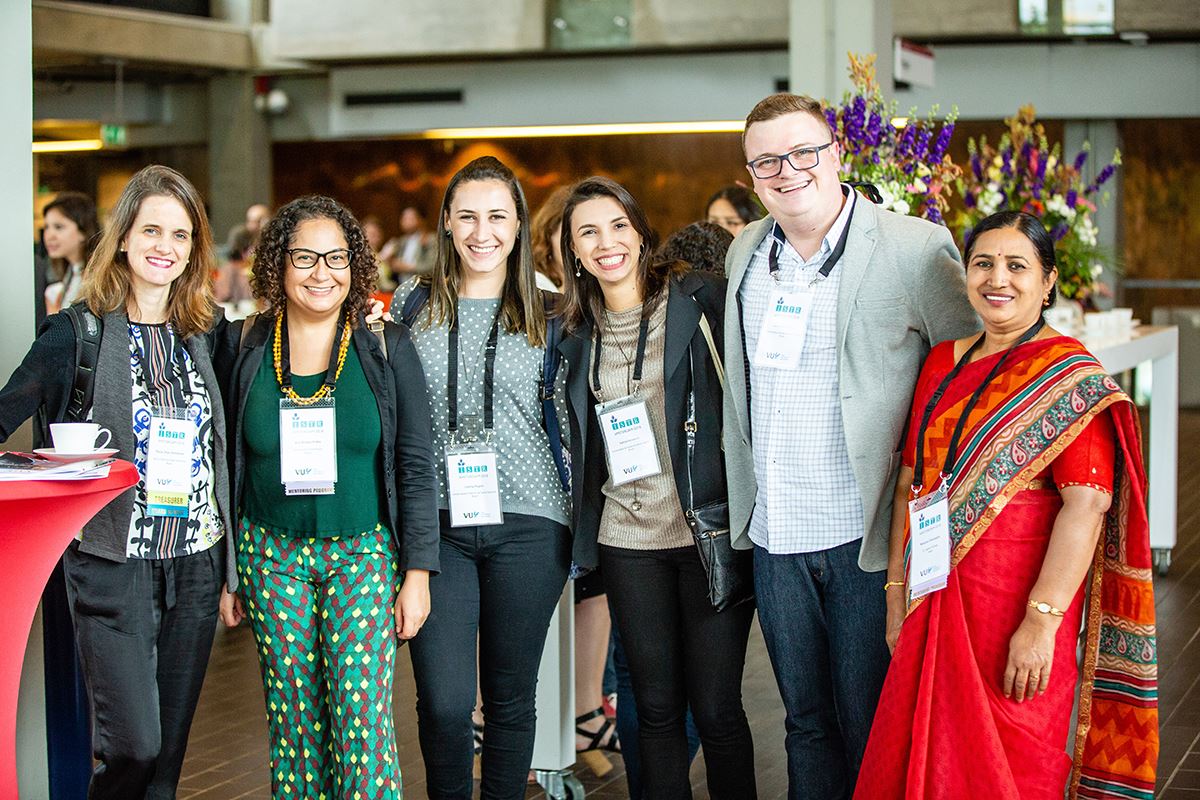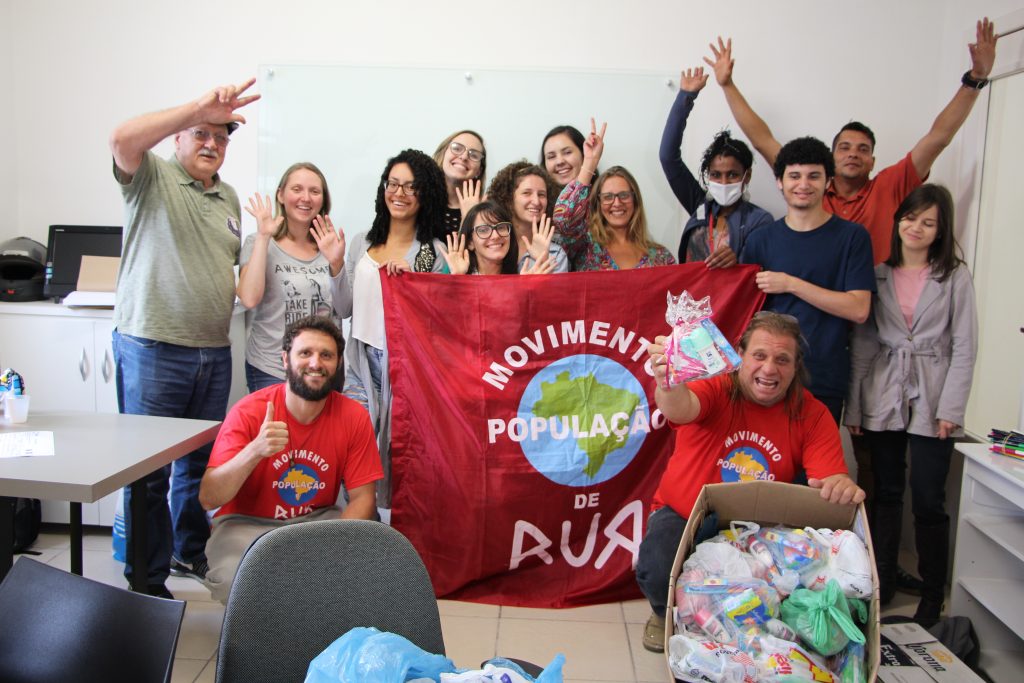When theory and practice interact – thoughts on the 2018 International Society for Third-Sector Research conference
14 Dec 2018
 Aghata Gonsalves (third from right) at the 2018 ISTR conference
Aghata Gonsalves (third from right) at the 2018 ISTR conference
The 2018 International Society for Third-Sector Research (ISTR) conference in Amsterdam brought together 675 participants from around the world to exchange their research expertise on civil society, philanthropy and the non-profit sector. When Hilary Gilbert of the South Sinai Foundation attended the same conference in 2016, she was surprised to find a lack of understanding of what community philanthropy is, and at the time commented that the event was “a sobering reminder that the issues which preoccupy our lives have yet to reach the radar of most third sector researchers.”
Two years down the line, this past summer the GFCF supported the participation of Aghata Gonsalves, Capacity Building Consultant for NGOs at Brazil’s ICOM – Instituto Comunitário Grande Florianópolis, to attend the 2018 edition of the event. We spoke with her after to understand why research matters for ICOM, to hear her impressions of the conference, and to explore if there appeared to be more understanding around community philanthropy – what it looks like, and why that matters.
GFCF: How does ICOM make use of research in its work?
Aghata Gonsalves (AG): In order to promote community philanthropy in the state of Santa Catarina, Brazil, ICOM uses participatory research and community mapping methods as strategies for better understanding community issues and priorities. Such research methods are also effective ways to raise the visibility of certain issues, and to mobilize financial resources for strategic local grantmaking.
Beyond our local research efforts, we have also tried to link up with academic researchers, working in Brazil and internationally, for different purposes. In the past, academic partners have helped ICOM to further disseminate our own research products, assisted us with our knowledge management systems and around the mapping of new processes at the community level, and generally systematizing ICOM’s work.
GFCF: What was the specific piece of work that you were presenting at the ISTR conference?
AG: The article I presented was entitled “Collective Action and Social Innovation: How Cooperation Efforts in Brazil Have Guaranteed Rights to the Local Homeless Population” (see my conference presentation and the original article here). I wrote this along with Aline Zeli Venturi and Yasmin Almeida Lobato Morais. We were all involved with the “Participatory Study on Homeless People” project, coordinated by ICOM (Aline Zeli Venturi took the lead around coordination efforts), and carried out in partnership with the National Movement of Homeless People with grant support from the GFCF. The project was developed and implemented with the direct involvement of individuals experiencing homelessness, who became research fellows on the topic – giving voice to their situation and needs.
The aim of the article is to describe how ICOM, as a community foundation, promotes social innovation through collaborative actions with a range of partners. The article also dives into the project itself, describing the expectations and motivations of homeless people who participated in the project, how they build new identities given their circumstances, and how they pursue social empowerment. The article also touches on how the initiative brought new visibility to the issue of homelessness within the public sphere and, finally, showcases the innovative nature of the initiative, and how working on this issue collaboratively across sectors created impact none of us could have expected.

“Participatory study on homeless people” participants
GFCF: Do you think there should be more links made between community philanthropy and research institutes / academia? Why or why not?
AG: For sure! At ICOM, we believe that the link between theory and practice is essential for generating new knowledge and reflection on our practices. In addition, research that is done more closely with what happens “in the real world” has the power to be disseminated, and really make sense to, a wider pool of people. Bringing together individuals from different fields (in this case, community philanthropy and academia) would also lead to the same issues being considered from different angles, and new knowledge and understanding being collectively generated as a result. Perhaps new partnerships such as this would lead to a revolution of sorts, in which the researcher would cease to be the sole holder of knowledge and instead would assume another, much humbler, human role that recognizes that true knowledge is produced when theory and practice interact.
GFCF: In your opinion, was community philanthropy a concept that was generally well understood at the ISTR conference?
AG: Following my participation at the conference in Amsterdam, my feeling is that the concept of community philanthropy is still lacking significant visibility in academic research circles, and at events such as ISTR, the largest global conference on third-sector research. Apart from the work presented by ICOM, there were just a few other examples of research on our field – one being “Opening the Space for Philanthropy: Expansion and Impact of Community Philanthropy – U.S. and Hungary.”
This was despite the fact that the conference focused on “collective actions for the public interest”, looking specifically at civil society organizations’ interactions with the public and private sector. So one would have thought that there would have been plenty of other great examples of community philanthropy organizations to share. However, from my participation, I began to think that the concept of community philanthropy carried with it different understandings, depending on the country of origin of the papers presented. Perhaps some organizations represented at the ISTR conference employ community philanthropy as a tool in their work – however they don’t necessarily recognize themselves in this terminology.
GFCF: Do you have any other impressions of the conference that you’d like to share?
AG: I have three other impressions that I’d like to highlight. First is that due to support from the GFCF it was possible to participate in this conference, which is extremely expensive for a small community foundation (this prohibitive price might be one of the reasons why the community philanthropy field isn’t better represented at the event, or similar events). Such support was very important because without it we would not have been able to present our work, even if it was accepted in the conference programme.
Another point is that the conference brought together 675 people from 58 different countries. This enabled me to meet people from different cultures, and to better understand their research and the work that they carry out in their regions. Most of them were not solely academics, and are also involved in the day-to-day work of civil society organizations that impact and transform communities where they work. So there were a lot of fascinating people to meet!
Finally, it was very interesting to present an article about homeless people, and to understand how different countries react to, and engage with, the subject. After presenting our article, many people from different countries asked questions about our methodology and results, because they found our work at ICOM to be inspiring and innovative. After our presentation, we were approached by many participants in the conference corridors, who thanked and congratulated us for the presentation. It was a moment of great joy and satisfaction for us, which validated our decision to put the homeless individuals themselves in charge of research on homelessness in Santa Catarina. So I really enjoyed this opportunity to share a little bit more about our work!

